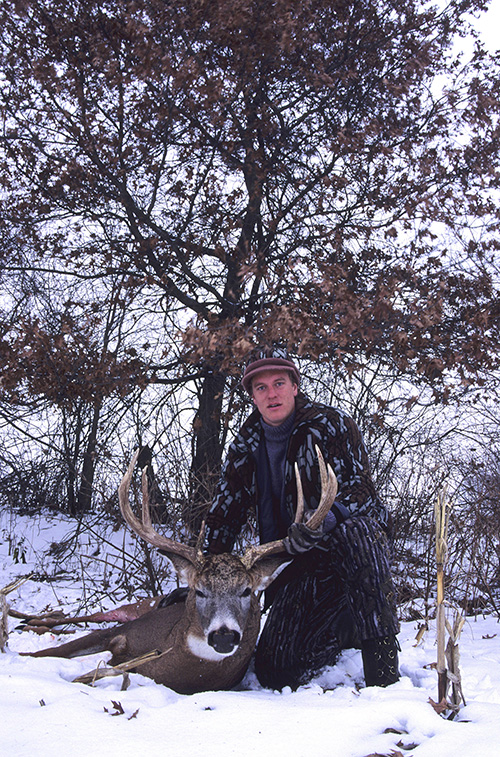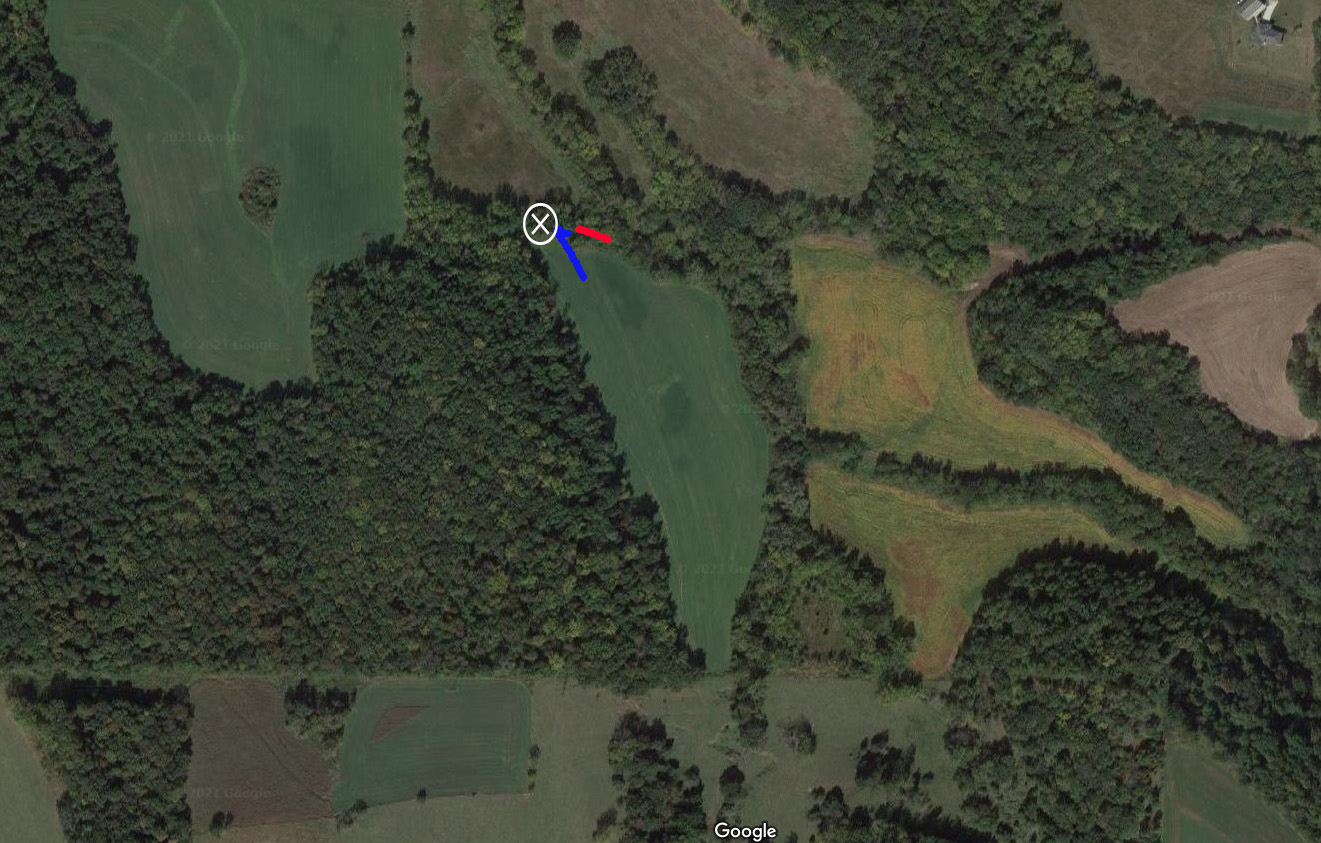I took to heart what I learned the previous season about how bucks like to use brushy fence lines when traveling across open country. Going into the 1991 season I had several such stands in place. This is the story of Buck # 2, but it is also the story of bowhunting fence lines.

Coming on November 10, 1991, on the first day of a break in ten days of frigid weather, I am not sure if was more excited or more relieved then I climbed down to put my tag on this big-bodied buck.
I shot this buck on November 10, 1991. I remember that it was the first warm day since Halloween. A big blizzard hit Northeast Iowa on Halloween that year and it immediately turned frigid cold that evening. That was followed by several days of high winds and lots of drifting. It was bone-chilling cold!
I carried a shove in my Jeep Cherokee and often had to stop along the gravel county roads on the way to my morning stands and shovel a path through a snow drift that had swept in during the night.
Back then, I was very poor – living more or less hand to mouth. My sister gave me a nice warm wool hunting coat for my birthday a few years and my wife knitted me a nice wool sweater, before but everything else low grade apparel.
I purchased a set of thin fleece camo pants and a pair of rubber Hodgman boots. Throw in a pair of traditional “long johns” and you about had my outfit.
I really suffered from November 1 through November 9, but finally November 10th arrived on a warm front.
I was so gung-ho back then that I didn’t even put bow hangers of any kind in the trees I hunted. When standing, I held the bow in my frigid fingers and when sitting I laid it in my lap with the release aid clipped on the string. I was afraid a buck might magically show up out of nowhere and surprise me and I would not have time to get a shot. That seemed unthinkable. So I spent every minute of every day sitting on go – I was on full time red alert.
Well, I have since learned that rarely does a buck surprise me in that way; I now hang my bows most of the time. But that day, November 10th, 1991 was the one time when being on red alert made the difference.
The field in front of the stand (south) was standing corn. The edge of the field was about 10 yards from the stand and there was a very good trail along that edge, between the corn and the trees. I was hunting it on a south wind, which took my scent out into the CRP field behind the stand.
Out of nowhere, during the middle of the afternoon, a doe came crashing out of the standing corn and into the brushy fence line about 15 yards to the east. A huge-bodied, big antlered buck was right behind her.

I placed this stand to take advantage of a new buck movement pattern I had “discovered” the previous year – bucks love to walk along wooded fence lines during the rut when traveling from one block of cover to the next. In this case, however, the buck actually chased a doe out of the standing cornfield south of the stand and offered a quick shot.
They paused for what I guessed was going to be just a moment in their chase, but it was all I needed. With the release aid already on the string, and the bow already in my hand, all I had to do was draw quickly, aim and release.
I had not a second to spare. Even as the arrow was speeding toward the buck, he was swapping ends to get back on the doe. The arrow caught him right in the back of the ham with a sickening thud. I groaned in shock.
But the buck only ran a few yards and fell over. The arrow had cut his femoral artery! The entire blood trail was about 15 yards long.
LESSONS LEARNED
I relearned the same lesson I had learned the year before – bucks love to use wooded, brushy fence lines when traveling between blocks of timber. Though the buck I shot was chasing a doe in the standing corn, there was a seriously large trail and several rubs and scrapes along the travel route that lay between the wooded fence line and the standing corn.
I had scouted the spot often in October and there was a bit of traffic along the edge then, but nothing like I saw on November 10th. Because of the constant north winds that set in from Halloween until the day I hunted this stand, I had not been there for several days. It was obvious that many bucks had used that route during the first week of November.
1991 was the start of my education about the futility of hunting buck sign during the rut. There was a really big scrape in the large block of timber to the west of the stand and I sat over that twice in late October without seeing a single buck.
Obviously, shooting a big buck with a bow was going to involve more than just finding a big scrape or rub and hanging a stand. 1991 was just the first step in that education. It took five or six more years before the lesson really sunk in and I stopped paying attention to buck sign.
Just as a quick side note, when I climbed into the stand that afternoon there were a couple of saplings that blocked any shot to the left (to the east). After mentally grumbling about them for an hour, I finally climbed down with my folding saw and removed them. That was exactly where the buck stopped during the brief seconds I had for the shot. If I had not cut those saplings to open up that shooting lane, I would not have gotten that buck.
Since then, I have spent a lot of time on my stands rehearsing how I will get shots at bucks in every possible direction and if I don’t have an opening, I climb down and make one. Never leave a variable to chance if you can control it.
That was Buck #2. If you want to continue on with the series, you can read about Buck #3 by clicking this link.
